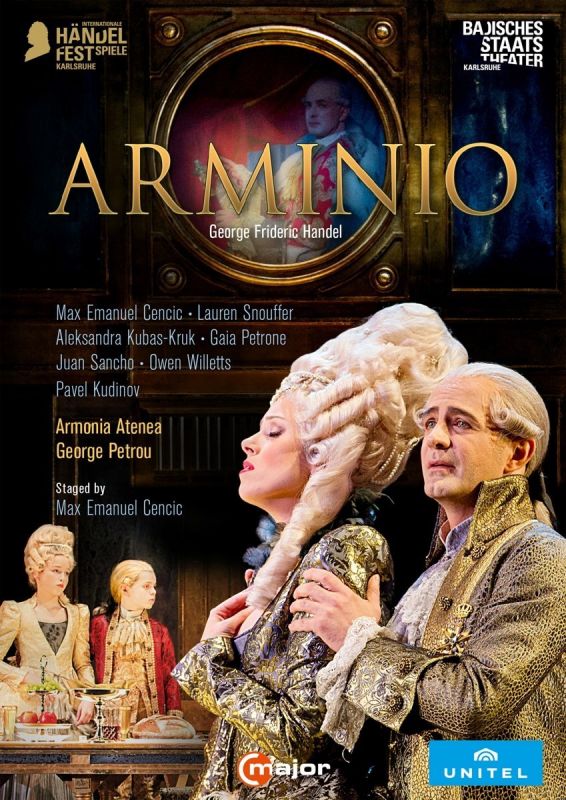HANDEL Arminio (Petrou)
View record and artist detailsRecord and Artist Details
Composer or Director: George Frideric Handel
Genre:
Opera
Label: C Major
Magazine Review Date: 07/2018
Media Format: Blu-ray
Media Runtime: 168
Mastering:
DDD
Catalogue Number: 744504

Tracks:
| Composition | Artist Credit |
|---|---|
| Arminio |
George Frideric Handel, Composer
Aleksandra Kubas-Kruk, Sigismondo, Soprano Armonia Atenea Gaia Petrone, Ramise, Mezzo soprano George Frideric Handel, Composer George Petrou, Conductor Juan Sancho, Varo, Tenor Lauren Snouffer, Tusnelda, Soprano Max Emanuel Cencic, Arminio, Countertenor Owen Willetts, Tullio, Countertenor Pavel Kudinov, Segeste, Bass-baritone |
Author: David Vickers
There are only a couple of minuscule cuts to recitatives, and the visceral theatricality of the performance masks some clumsy tropes in the staging. The pseudo-18th-century setting presents what looks like an aristocratic French household (Arminio, Tusnelda and their supernumerary children and servants) being caught as they attempt to flee from Robespierre’s thugs during the Reign of Terror; most scenes are populated by characters not supposed to be on stage, and all sorts of invented superfluous action often distorts the opera. For example, Sigismondo is wrongly portrayed as a foppish wimp, Ramise is addled by an alcoholic haze, and their interactions are depicted via drunken puking, drug-taking and gratuitous carnality. At the end of Act 2 Tusnelda is shown to be raped by Varo (the libretto and music ought to make it sufficiently clear that the Roman invader is supposed to be moved to pity because he prizes virtue – and the production’s distasteful contradiction causes his noble actions at the start of Act 3 to make very little sense). During the final chorus – not performed but mimed to the recording by the cast holding gold masks – the ‘forgiven’ Segeste is taken outside and guillotined. Copious subversions of the personalities, motivations and actions of its characters makes it incongruous that Cencic enthuses (in a short booklet interview) that Arminio is one of Handel’s finest operas. I wouldn’t go that far – with nearly 40 extant operas to choose from, perhaps it makes the top 30 by the skin of its teeth. This is not to disparage the effectiveness of some excellent top-drawer music when experienced in dramatic context – in particular, the last few scenes of Act 2 and first few numbers of Act 3 emerge as a potent trajectory that depicts the crises of its main characters emotively.
Discover the world's largest classical music catalogue with Presto Music.

Gramophone Digital Club
- Digital Edition
- Digital Archive
- Reviews Database
- Full website access
From £8.75 / month
Subscribe
Gramophone Full Club
- Print Edition
- Digital Edition
- Digital Archive
- Reviews Database
- Full website access
From £11.00 / month
Subscribe
If you are a library, university or other organisation that would be interested in an institutional subscription to Gramophone please click here for further information.




